5 points to consider: selecting functional and high-quality fuel level sensors
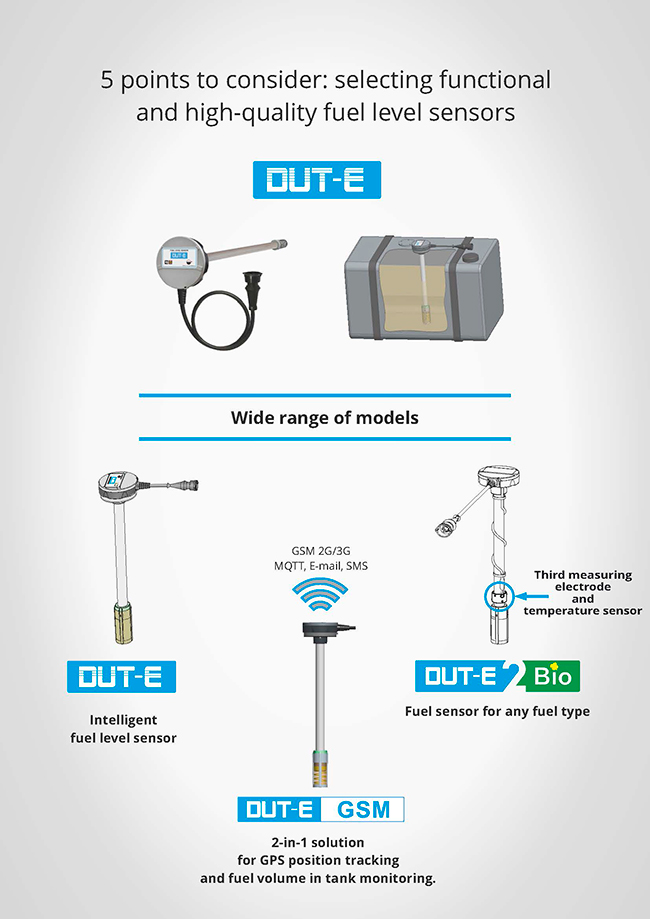
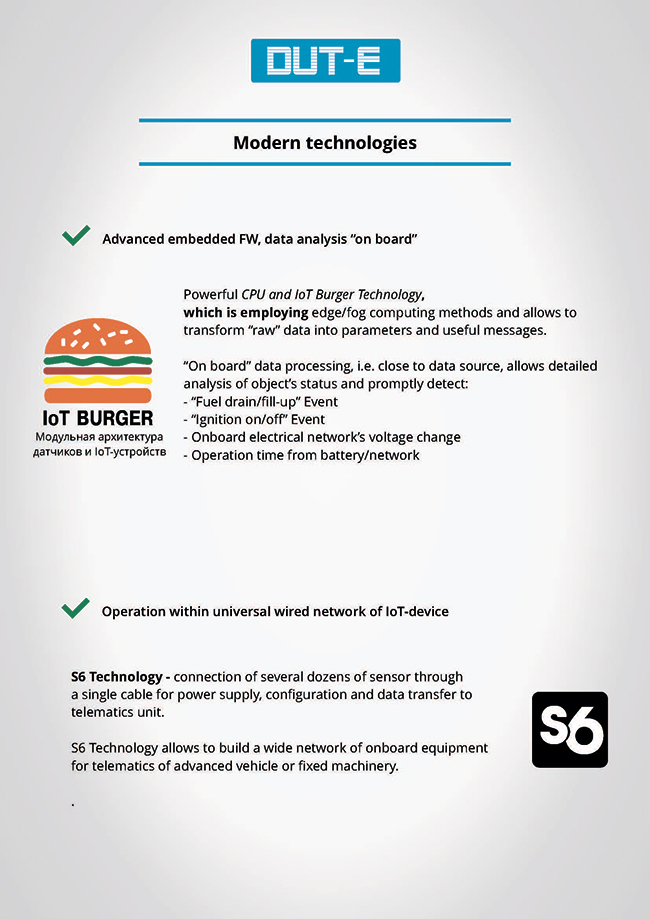
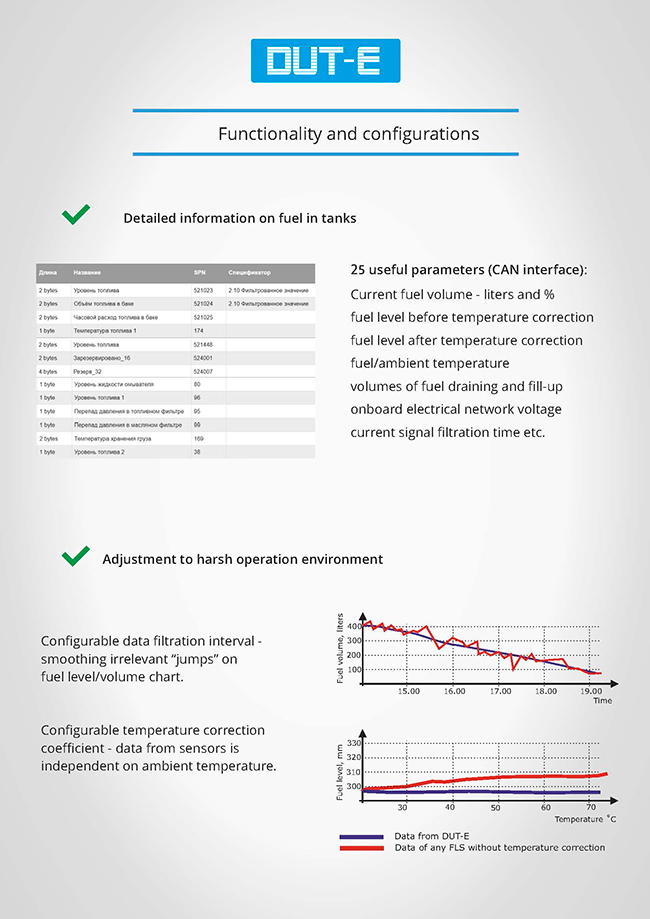

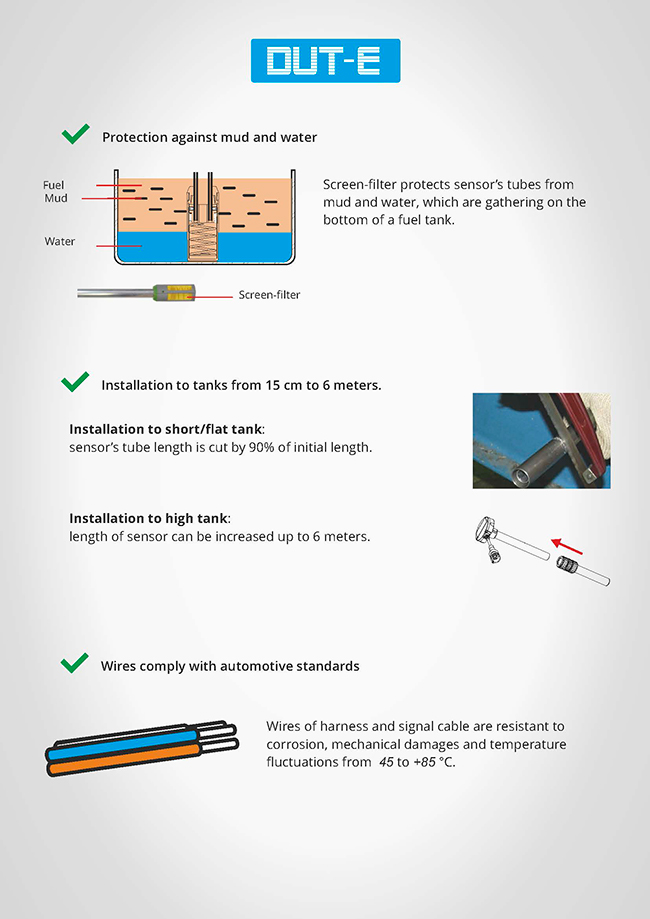

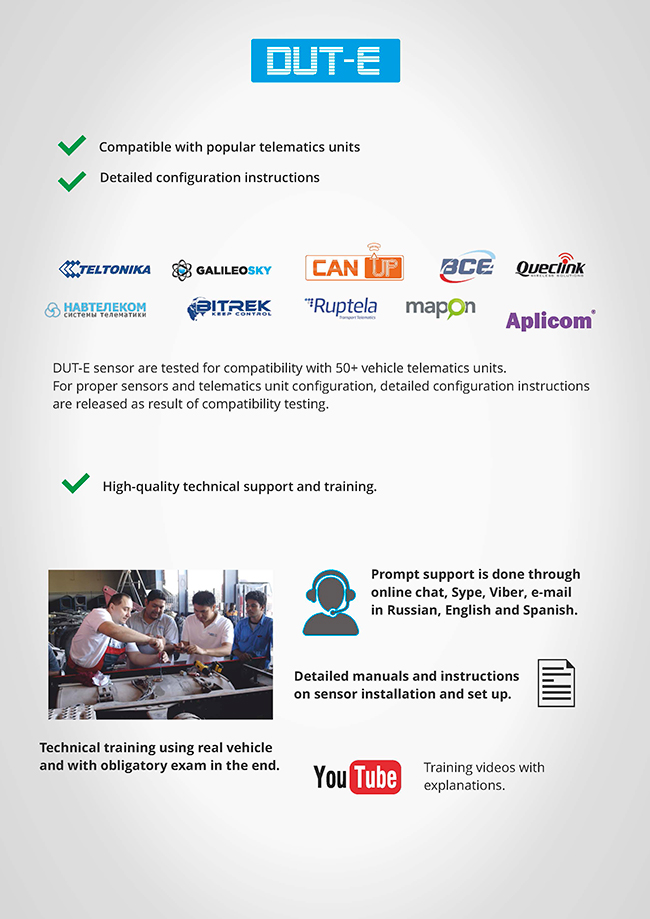
Wide range of models:
DUT-E (Intelligent fuel level sensor)
DUT-E GSM (2-in-1 solution for GPS position tracking and fuel volume in tank monitoring)
DUT-E 2Bio (Fuel sensor for any fuel type)
Modern technologies
Advanced embedded FW, data analysis “on board”. Powerful CPU and IoT Burger Technology, which is employing edge/fog computing methods and allows to transform “raw” data into parameters and useful messages. “On board” data processing, i.e. close to data source, allows detailed analysis of object’s status and promptly detect:
– “Fuel drain/fill-up” Event
– “Ignition on/off” Event
– Onboard electrical network’s voltage change
– Operation time from battery/network
Operation within universal wired network of IoT-device. S6 Technology – connection of several dozens of sensor through
a single cable for power supply, configuration and data transfer to telematics unit. S6 Technology allows to build a wide network of onboard equipment for telematics of advanced vehicle or fixed machinery.
Functionality and configurations. Detailed information on fuel in tanks
25 useful parameters (CAN interface):
— Current fuel volume – liters and %
— fuel level before temperature correction
— fuel level after temperature correction
— fuel/ambient temperature
— volumes of fuel draining and fill-up
— onboard electrical network voltage
— current signal filtration time etc.
Adjustment to harsh operation environment. Configurable data filtration interval – smoothing irrelevant “jumps” on fuel level/volume chart. Configurable temperature correction coefficient – data from sensors is independent on ambient temperature.
Self-diagnostics function and Events Journal. Quality of gathered data is checked by “Self-diagnsotics” module: sensors’ condition, correctness of calibration, excessive supply voltage check, short circuit of measuring tubes and water in tank, etc. Event Registrar saves all detected Events (draining, fill-ups, errors etc.) in sensor’s internal memory.
Wireless configuration using smartphone. Sensors with IoT Burger logo can be configured over Bluetooth using any Android-based smartphone/table. No connection to PC required.
Design and specifications
Reliable fixation in fuel tank. Bottom spring stop ensures rigid fixation of sensor inside fuel tank, decreased influence of fuel fluctuations on accuracy of measurement.
– Protection against mud and water. Screen-filter protects sensor’s tubes from mud and water, which are gathering on the bottom of a fuel tank.
– Installation to tanks from 15 cm to 6 meters. УInstallation to short/flat tank: sensor’s tube length is cut by 90% of initial length. Installation to high tank: length of sensor can be increased up to 6 meters.
– Wires comply with automotive standards. Wires of harness and signal cable are resistant to corrosion, mechanical damages and temperature fluctuations from 45 to +85 °C.
– Sensitive to small level changes
– Accurate fuel volume measurement
Inaccuracy of measurement:
– 1% in vehicle’s tank
– 0.2% in stationary tank
Quality and tech.support
– Quality management of product design and manufacturing processes. < 0.5% failure rate
within 3-year warranty period. Quality management system of Technoton is certified according to ISO 9001. Quality is controlled at all stages: design, planning, input materials control, assembly, post-assmebly, warehouse acceptance.
– Compatible with popular telematics units
– Detailed configuration instructions. DUT-E sensor are tested for compatibility with 50+ vehicle telematics units. For proper sensors and telematics unit configuration, detailed configuration instructions are released as result of compatibility testing.
– High-quality technical support and training. Prompt support is done through online chat, Sype, Viber, e-mail in Russian, English and Spanish. Prompt support is done through online chat, Sype, Viber, e-mail in Russian, English and Spanish. Detailed manuals and instructions on sensor installation and set up. Technical training using real vehicle and with obligatory exam in the end. Training videos with explanations.
